Well, it’s Good Friday – time for Hot Cross Buns. I usually make my traditional Hot Cross Buns, but today I figured I might try something a little different and see how gluten-free Hot Cross Buns fared in comparison.
Hmm, well… can I be honest? If I was coeliac and I had no other option, I’d be grateful for the opportunity to still eat bread. But if I had the choice (as I do), these gluten-free buns wouldn’t be my first pick. Don’t get me wrong – they tasted good enough, particularly slathered with butter and apricot jam. It was more the drier texture that really defined these as being different from their gluten-based cousins. As my brother remarked “You’d think that if they can put a man on the moon, they could come up with a gluten-free flour that resembles gluten flour.” Well, I’m not sure it’s doable, but maybe one day.
Having said all that, I’m glad I gave these a shot and a big thanks to Healtheries for their recipe. In the meantime, I’d love to hear from any fellow foodies who’ve baked gluten-free bread and what results they’ve achieved. Is it possible to make gluten-free bread taste like gluten bread, or am I reaching for the moon here? LOL.
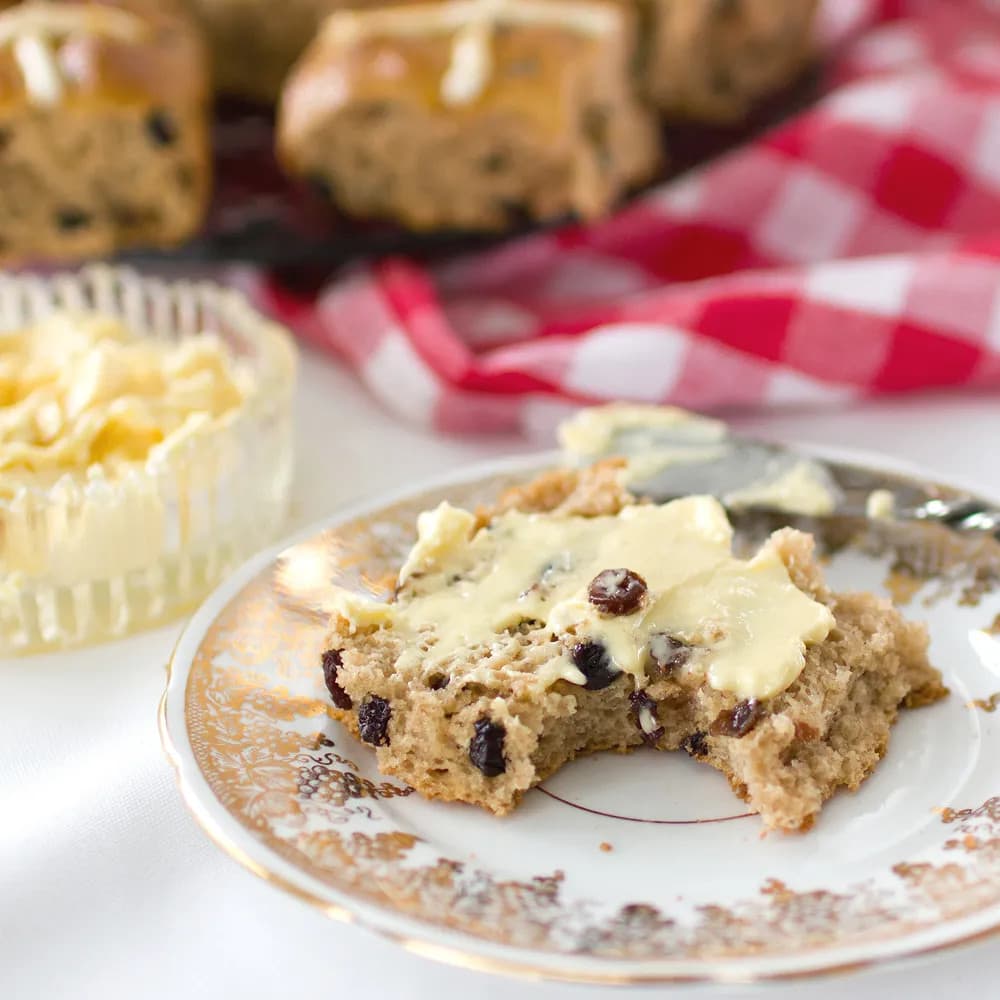
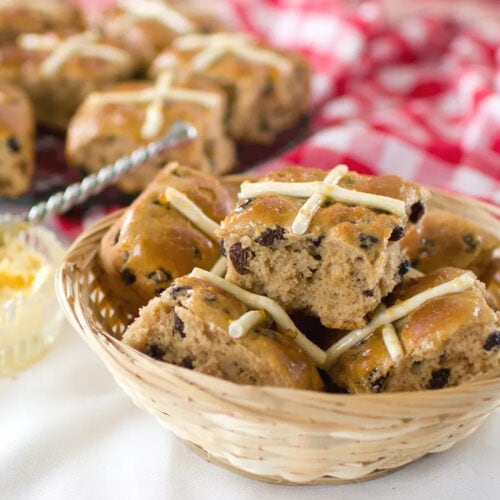
GLUTEN-FREE HOT CROSS BUNS
Equipment
Ingredients
- 3 tsp dried yeast
- 1¾ cups warm milk
- 2 tbsp caster sugar
- 3 ¼ cups plus 2 tablespoons extra gluten-free bread or baking mix (I used Healtheries Simple Bread Mix)
- 2 tsp ground cinnamon
- 2 tsp ground mixed spice
- ½ tsp salt
- 60 g butter
- 2 cups sultanas or currants
- 2 eggs
- 1 tsp sugar
- 2 Tbsp apricot jam (warmed to glaze)
Instructions
- Place yeast, milk and sugar in a small mixing bowl. Whisk to dissolve sugar. Rest for 10 minutes.
- Sift together first measure of bread mix, spices and salt into the large bowl of an electric mixer with dough hooks. Using fingertips, rub through butter.
- Add sultanas, eggs and yeast mixture. Beat for 7 minutes.
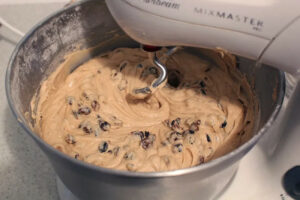
- Using a 1/3 measuring cup, scoop mixture into generous mounds on a greased 30x20cm lamington pan, making 3 rows of 4 mounds each (I used a damp off-set spatula to smooth the surface of each bun). Allow space for dough to rise (I didn’t have the correct sized pan and placed my buns quite close together. If you prefer a distinct ‘bun’ shape, set them further apart).
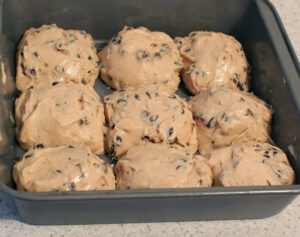
- Rest the dough in a warm place for 45 minutes until almost doubled. Preheat oven to 200°C (400°F).
- Mix extra 2 tablespoons bread mix, 1 teaspoon sugar and 1 tablespoon water to a paste and pipe crosses on buns.
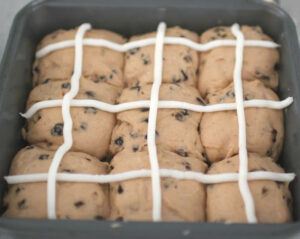
- Bake for 25-30 minutes until cooked through and browned. Brush on jam while still warm.
- Serve warm with some butter and your favourite jam.
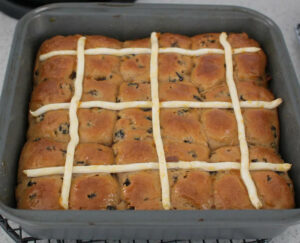

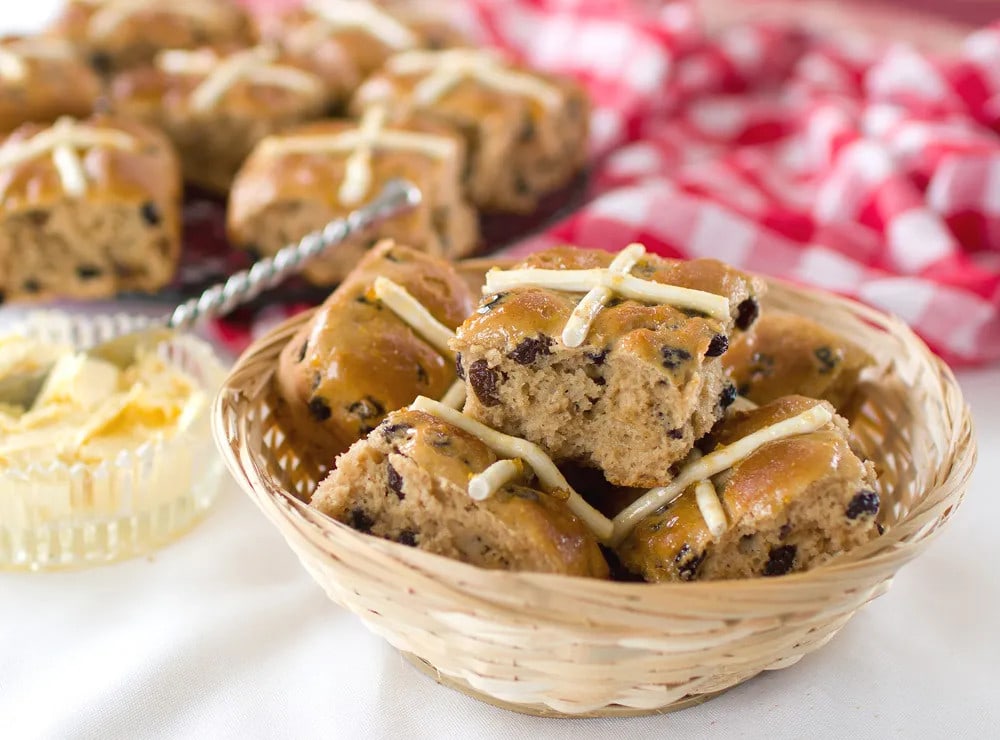

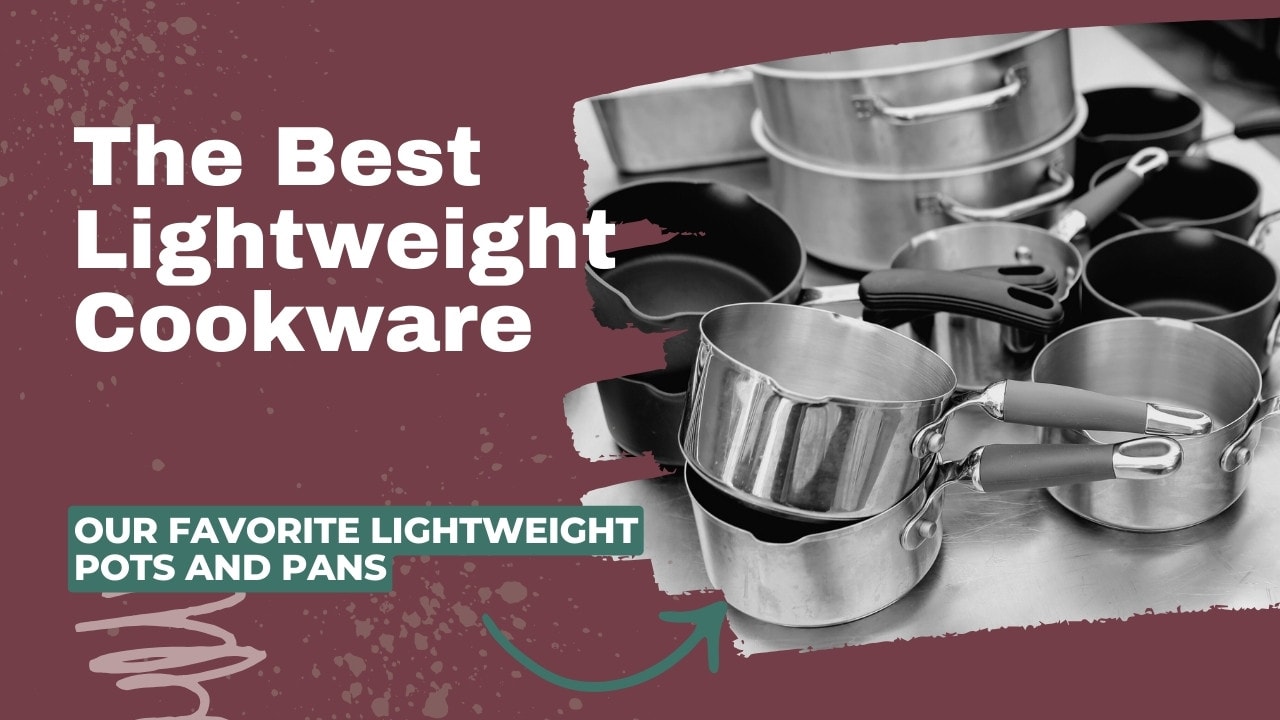
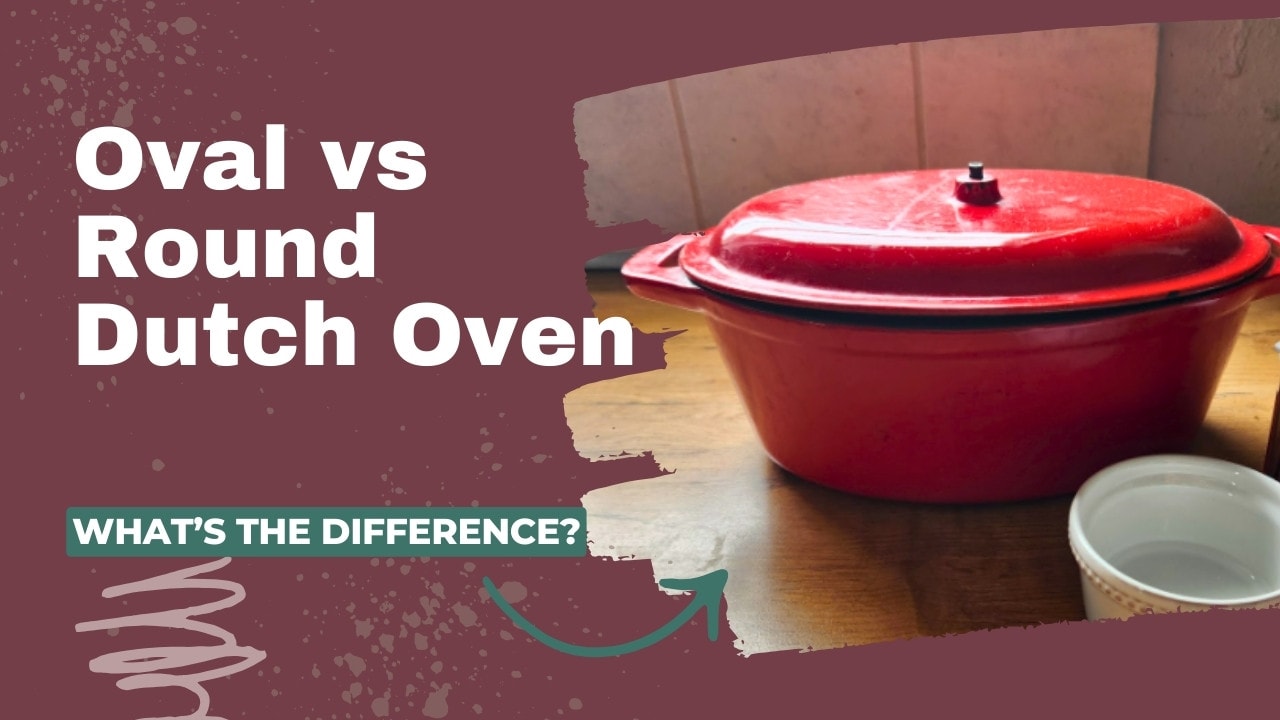





I have made GF hot cross buns in the past, & I found that they were OK when warm, but rock hard when cold.My advise for all GF cooking, is to warm it if possible, eg toast, grilled sandwiches, warmed fruit cake.
Yes, totally agree!